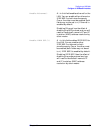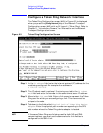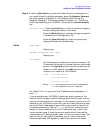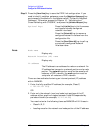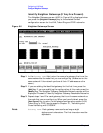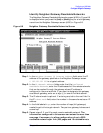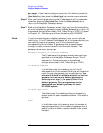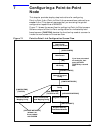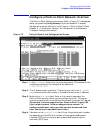
Chapter 6 103
Configuring a LAN Node
Configure Neighbor Gateways
Configure Neighbor Gateways
You need to visit the next two screens only if you are configuring a
non-gateway node that is on the same network as a gateway. In this
case, the non-gateway node needs to know the identity of any neighbor
gateway. Neighbor gateways can be either full or half gateways.
Gateways that are on the same network are called neighbor
gateways. A non-gateway node on a LAN, Token Ring, or FDDI
network may need to go through a neighbor gateway in order to send
messages to an entirely different network. (Two nodes are on the same
network if the network portion of their IP addresses are the same.) All
LAN, Token Ring, FDDI, 100VG-AnyLAN or 100Base-T nodes that are
on the same network as a neighbor gateway need to know the identity
of any neighbor gateways. When you configure a LAN, Token Ring,
FDDI, 100VG-AnyLAN, or 100Base-T node, you enter into its
configuration the identity of any accessible neighbor gateways that
share the same network. The identified gateways may be either full or
half gateways.
You may designate gateways as default gateways. Messages for a
network will be routed to a default gateway if there is no gateway
configured for the destination network. The default gateway will then
attempt to locate the destination of the message.



